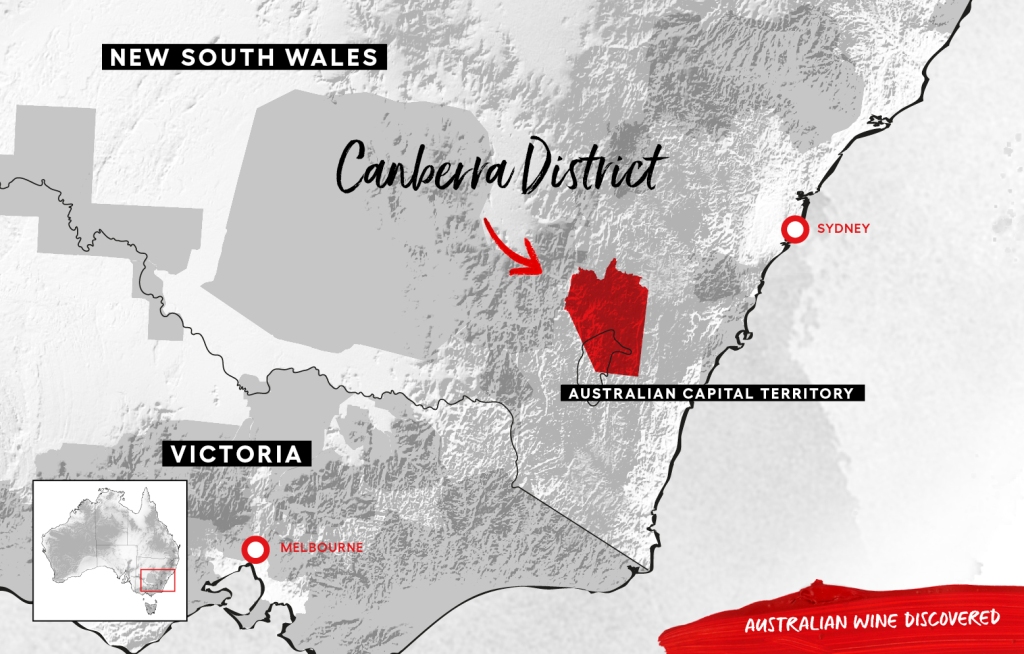
The Canberra district has a cool climate thanks to the high altitude (700 meters above sea level) and a cooling breeze from the nearby ocean. It had been a wine growing region from the first settlement of Australia in the late 1700s, but in the early 1900s it disappeared because keeping sheep for wool was more profitable. When in the 1970s wool declined as well, three men rebooted wine growing in Canberra: Ken Helm, John Kirk, and Edgar Riek. On this third day of our trip we visited two wineries established by them: Clonakilla by John Kirk, and Helm Wines by Ken Helm. Canberra is a small wine growing region, with only 300 hectares of vines. The climate is very suitable for wine growing, but there is not enough water available to increase the production.
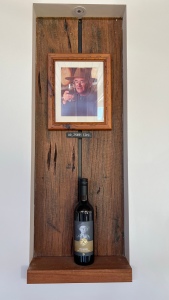
The first winery we visited in the Canberra district is Clonakilla, named for the Irish heritage of the Kirk family. John Kirk was a research scientist with a PhD in biochemistry who started the Clonakilla winery as a hobby in the 1970s.
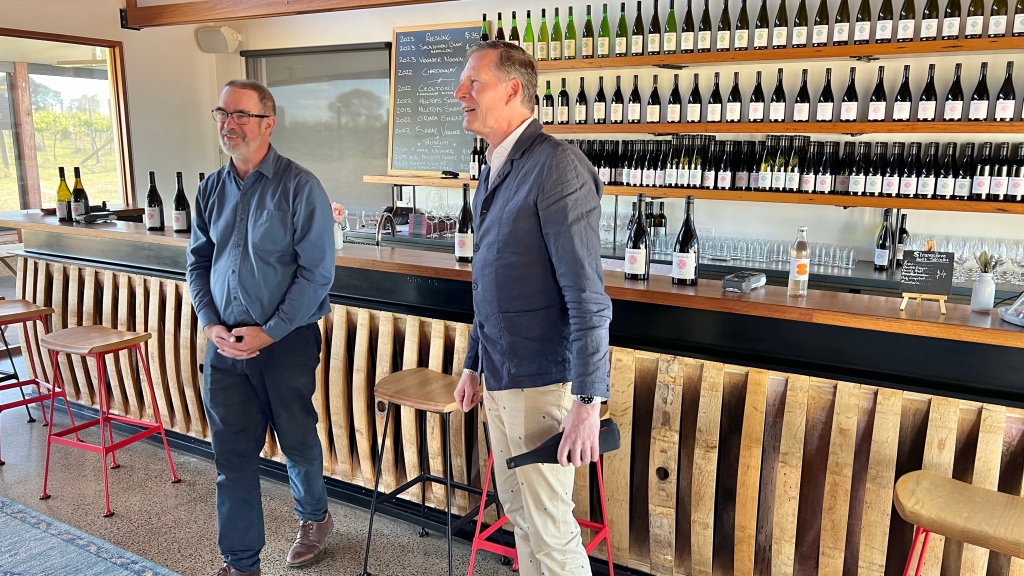
In the 1990s his son Tim visited Guigal in the northern Rhône, and was captured by Syrah that was cofermented with a bit of Viognier. Since he figured that the climate and soils in Canberra were quite similar to the northern Rhône (if not the slopes), he thought It would be a good idea to try and make a similar wine in Canberra. Canberra has a large difference in temperature between day and night of about 20 degrees Celsius (40 degrees Fahrenheit), which is ideal for the aromatic development of the grapes. Due to the lower average temperature, Shiraz from Canberra is lighter in style than from Barossa. The grape variety Syrah from France is known as Shiraz in Australia. Clonakilla is a small family winery that only has 16 hectares of grapes. They produce 200,000 bottles annually, buying additional grapes that are used for non-premium wines.
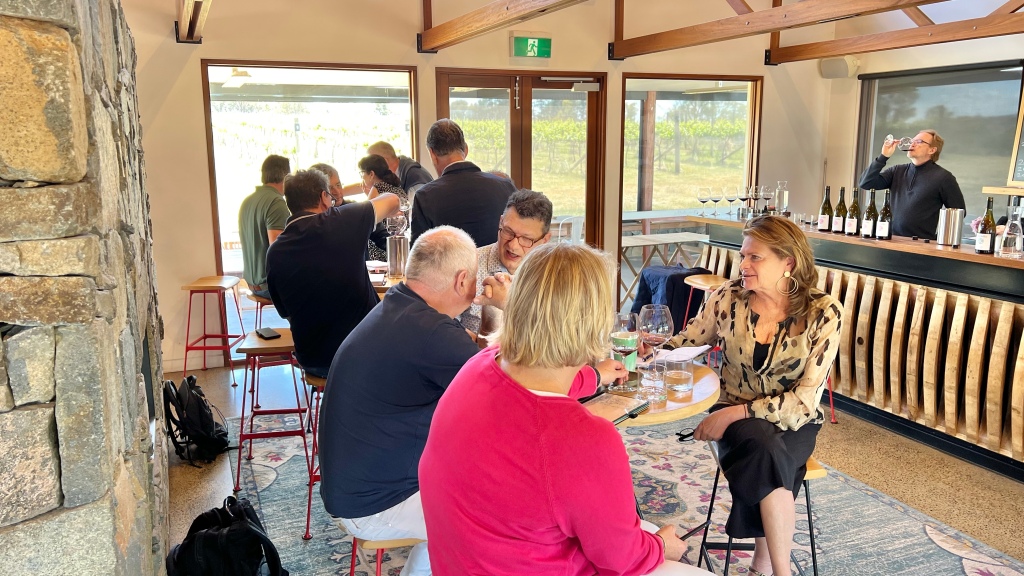
At Clonakilla we had three rounds of tasting. The first two rounds were vertical tastings of the two fagship wines of the winery, the Shiraz Viognier and the Syrah. (A vertical tasting means tasting the same wine from different vintages.)
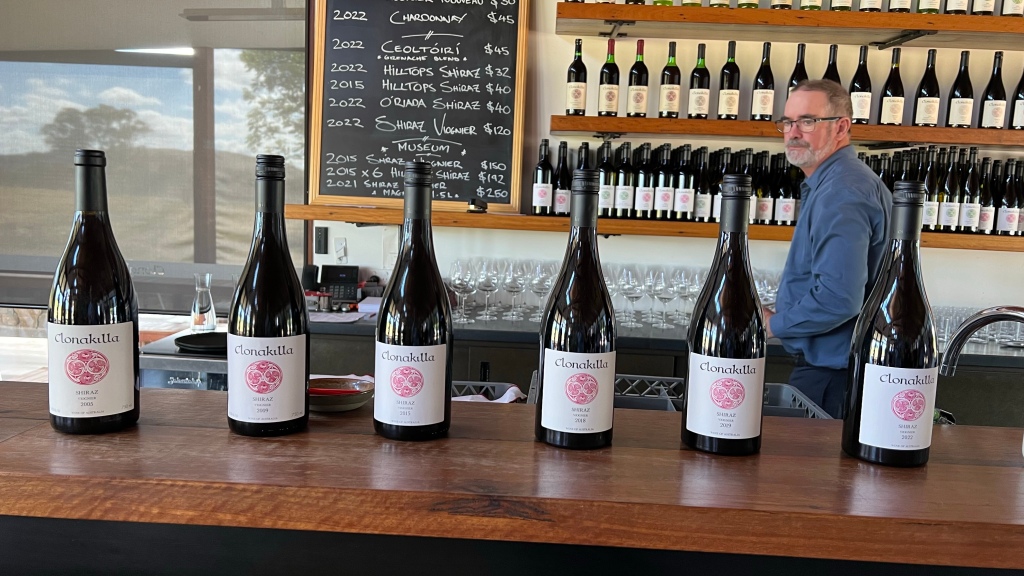
The Shiraz Viognier is 96% Shiraz with 4% Viognier, with 20%-40% fermented as whole bunches. When the grapes are still attached to the bunch, some maceration carbonique occurs to develop the fruity aromas of the wine. When the grapes are released, a micro injection of sugary grape juice restarts the fermentation, and the stems add some tannins and aromas to the wine. The wine is aged in French barriques of which maximum a third is new, for at least 12 months. We tasted several vintages of the Shiraz Viognier:
- 2005: developed, elegant, somewhat drying finish, fruit faded away
- 2009: jammy fruit, balanced, developed, warm, ripe tannins
- 2015: herbaceous aromas from the stems, fresh, present tannins
- 2018: needs more time in the bottle
- 2019: dark fruit, juicy, sticky tannins, higher acidity than some of the other vintages (aged for 18 months in oak instead of the usual 12)
- 2022: black pepper, fresh, elegant, ripe soft tannins
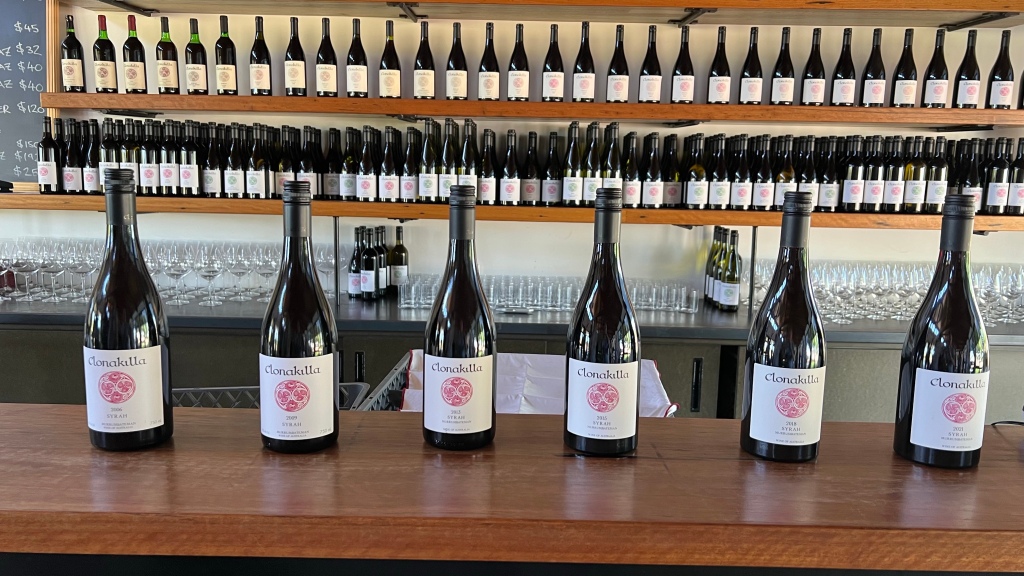
The next vertical tasting was for the Syrah, which is 100% shiraz that is completely destemmed (i.e. no whole bunches). It is produced from only 0.4 hectares, so the production is very limited. The vertical tasting of the Syrah included the following vintages:
- 2006: wow, what a wine! Beautiful ripe fruit, fresh, complex, elegant, balanced, velvety tannins, very powerful for its age.
- 2009: powerful, fresh, less jammy fruit.
- 2013: herbaceous aromas.
- 2015: earthy, balanced, has potential.
- 2018: caramel, ripe tannins.
- 2021: herbaceous aromas.
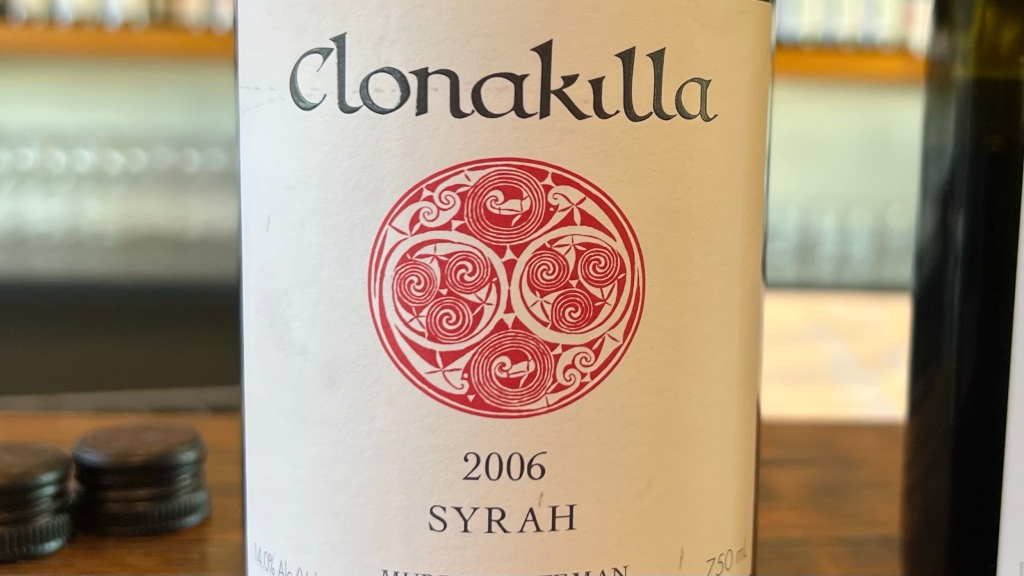
It is remarkable how some of these wines resemble Syrah from the Northern Rhône, and how much difference there is between the vintages if you consider that Australia has the reputation to produce ‘brand name’ wines that taste the same every year.
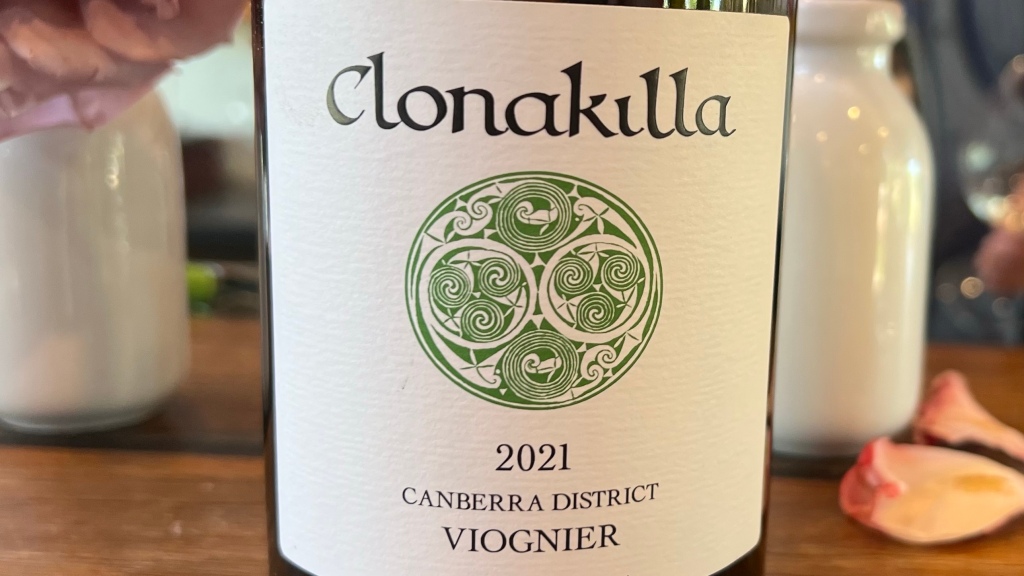
I was curious whether the Viognier varietal wine would resemble Condrieu from the Northern Rhône like the Syrah/Shiraz and so I asked Tim about it. He said the best way to find out is to try it, and so he got out a bottle of 2021 Viognier. This was quite different from a Condrieu, much more crisp and not as rich in either body or aroma.
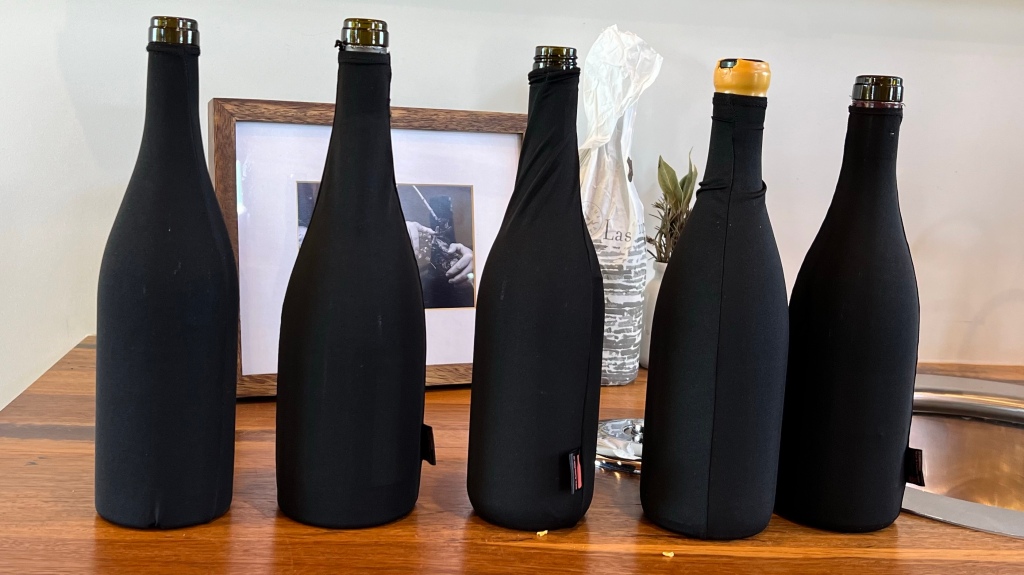
The third and final tasting was a blind tasting of 11 different Syrah/Shiraz from the best producers and growing areas around the world. The staff of Clonakilla also participated in the tasting, so it would be fun to see if they could recognize their own wines in the blind tasting.

Here is what I thought of the wines; remember I tasted them blind and found out only afterwards what I had been tasting when the wines were revealed:
- France, Domaine Corbis, Cornas La Sabarotte 2017: closed, warm, tight, strong but mature tannins
- France, Guigal Château d’Ampuis Côte Rôtie 2016: earthy, fresh, drying finish
- Chile, Errazuriz Aconcagua Costa Las Pizarras Syrah 2017: acidic, ripe tannins
- South Africa, Eagle’s Nest Constantia Shiraz 2012: developed, ripe, high alcohol
- Chile, Valle de Elqui, Tococo de Alcohuaz 2015: juicy, nice acidity, soft but high tannins, drying finish
- Australia, Geelong Farr Shiraz 2016: nice fruity aromas, complex, sour cherries, ripe tannins
- Australia, Clonakilla Canberra Murrumbatum T&L Vineyard Block One 2016: fresh, hint of herbaceousness
- Australia, Shaw + Smith Adelaide Hills Shiraz 2021: eucalyptus, high tannins, herbaceous
- United States, Tensley California Santa Barbara Syrah 2022: candy, caramel, warm, high but mature tannins
- Australia, Clonakilla Canberra Murrumbatum Syrah 2015: eucalyptus, balanced, fresh, beautiful fruit
- Australia, Michael Hall Eden Valley Flaxman’s Valley Syrah 2020: eucalyptus, drying finish, fresh
The Clonakilla Syrah 2015 was my personal favorite. Others in the group preferred the South African one, but I thought the alcohol was too prominent in that one. The Clonakilla guys did pick out the 2015 Syrah as their own, but not the Block One.
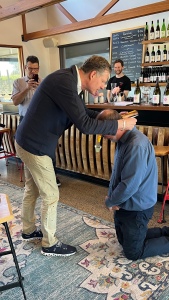
To thank Tim for this unique tasting, Cees inaugurated him into the Order of Slicers of Dutch Cheese, which comes with a gift of a cheese slicer and a wedge of excellent 2-year matured Gouda cheese.
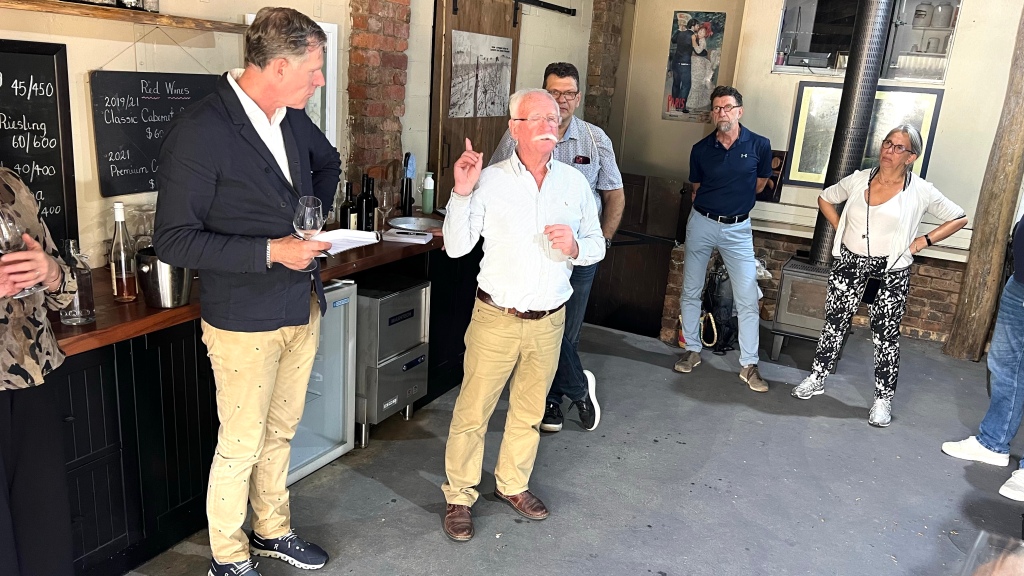
After a quick lunch in the center of town we visited a second founding father of the Canberra wine district: Ken Helms. This is an even smaller family business, producing only 80,000 bottles per year. He doesn’t export and sells everything locally. Ken explains that he started planting the vineyard in 1973 with Riesling and Cabernet Sauvignon. Riesling grapes are susceptible to sunburn from too much sun, which causes an unfavorable kerosine aroma. To prevent this, Ken has planted the vines in east-west oriented rows so they will catch less sunlight at the hottest time of the day, and prunes the vines in such a way that the grapes are shielded from the sun by the leaves (canopy). The east-west orientation of the vines also helps to make better use of the evening sea breeze to cool off. No irrigation is used for the Cabernet Sauvignon (except in a severe draught), so the yield is very low.
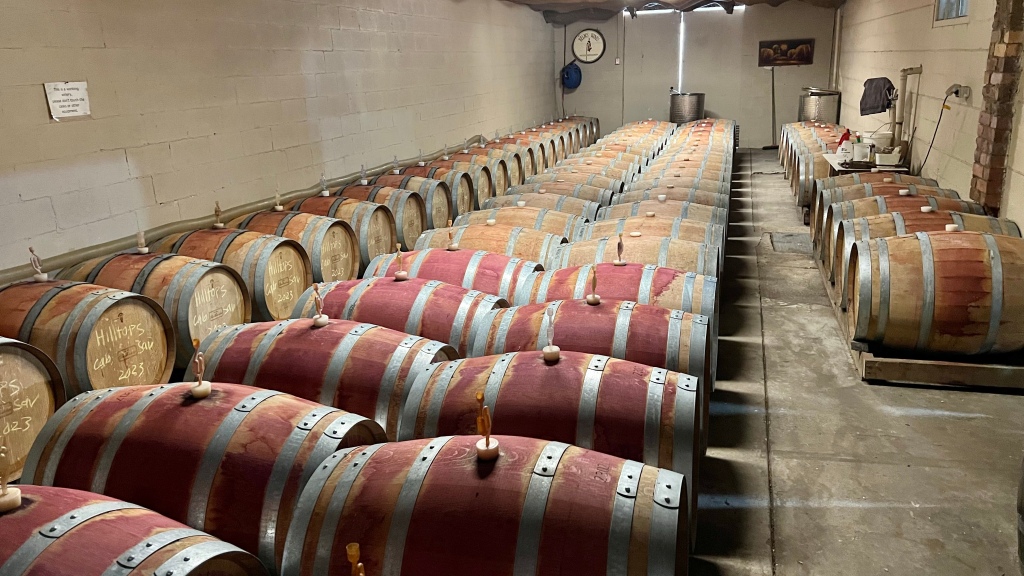
The Cab is aged for 12 months in new oak barrels and then for 12 to 24 additional months in used oak. The wine is not released before it is ready to drink.
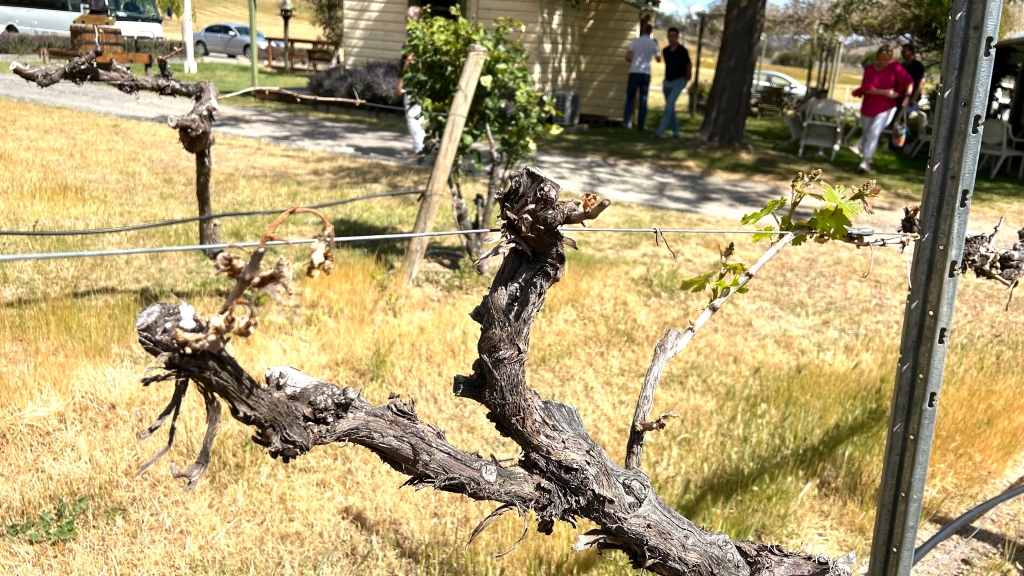
Due to the cool climate, Canberra district does have to deal with frost issues. The shootings on the left-hand side are destroyed, but luckily new ones are growing out.
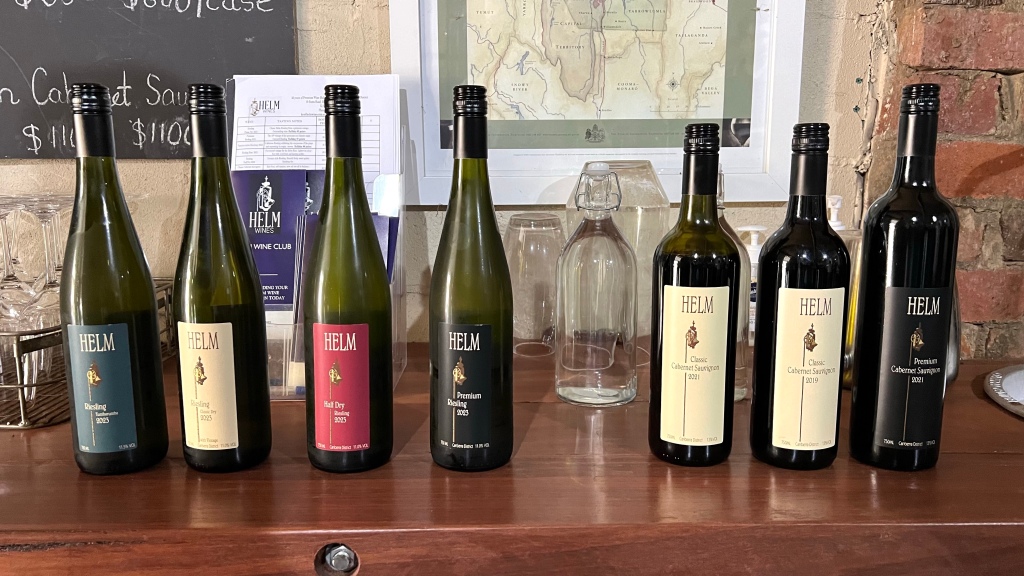
We tasted the following wines:
- Riesling Classic Dry 2023: tropical fruit, light, juicy, soft acids
- Premium Riesling 2023: balanced and powerful, high acidity
- Tumbarumba Riesling 2023 (from the Snowy Mountains): green apple, crisp
- Half Dry Riesling 2023: doesn’t seem sweet due to the balance between sugar and acidity. This is similar to a Kabinett style Riesling from Germany.
- Riesling Rosé 2023 (made with 10% Cabernet Sauvignon): residual sugar to compensate for the tannins from the Cabernet
- Cabernet Sauvignon 2019: soft tannins, cherry jam
- Cabernet Sauvignon 2021: light color, ripe berries, low tannins
- Premium Cabernet Sauvignon 2021: light color, bell pepper, mature fruit, soft tannins
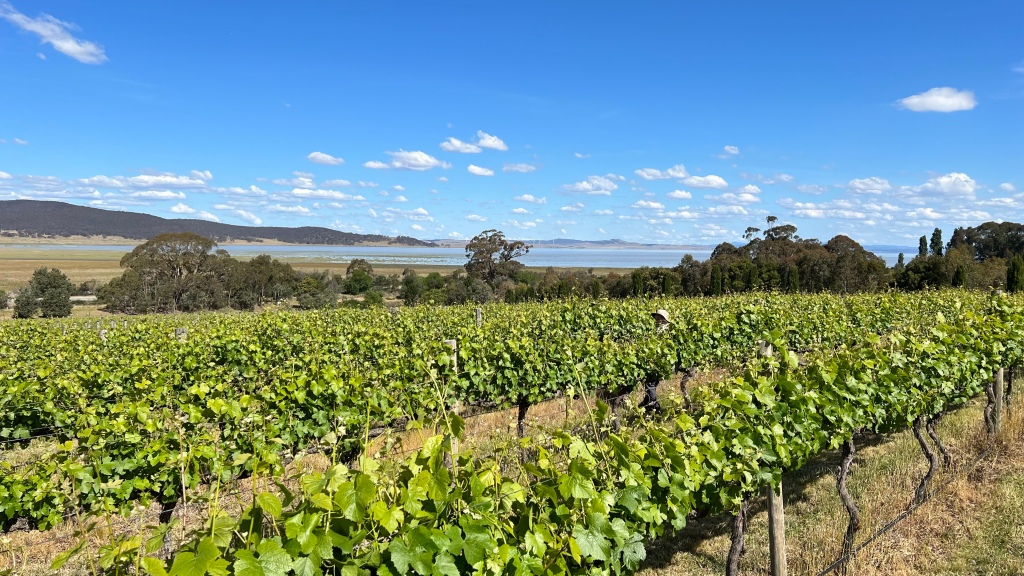
The final winery we visited on the third day was Lerida Estate, by Lake George. Another boutique winery that produces about 100,000 bottles per year. The lake provides a tempering effect on the climate. It is 2 degrees Celcius (4 degrees Fahrenheit) less hot here than at Murrumbateman, but on the other hand there are less problems with frost. Our tasting session was led by winemaker Jacob, who has experience in Germany, France, California, and other areas in Australia. Lerida has three levels: Estate, Cullerin, and Single Vineyard.
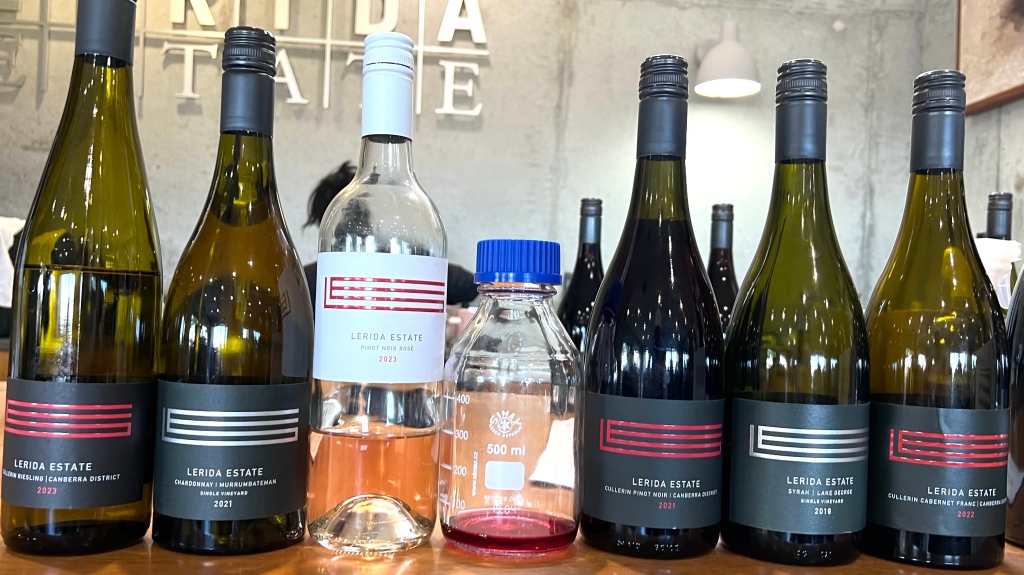
We tasted the following wines:
- Cullerin Riesling 2023: floral and light with high acidity, balanced out by the residual sugar (Kabinett style); this is the first vintage from recently planted Riesling.
- Murrumbateman Chardonnay 2021 (made from grapes from another winery, as Lerida’s own Chardonnay harvest of 2021 was lost to botrytis and used to make a sweet wine): oak, citrus, crispy and clean.
- Pinot Noir Rosé 2023: light color, candy cane, high acidity
- Cullerin Pinot Noir 2022: light color, herbaceous, spicy, light, high acidity
- Lake George Shiraz 2019: dark fruit, crisp, soft tannins, elegant, balanced, very nice (from a very hot and dry vintage)
- Cullerin Cabernet Franc 2022: bell pepper, light bodied, high acidity. This is a small production of only 3 rows of vines, about 600 bottles.
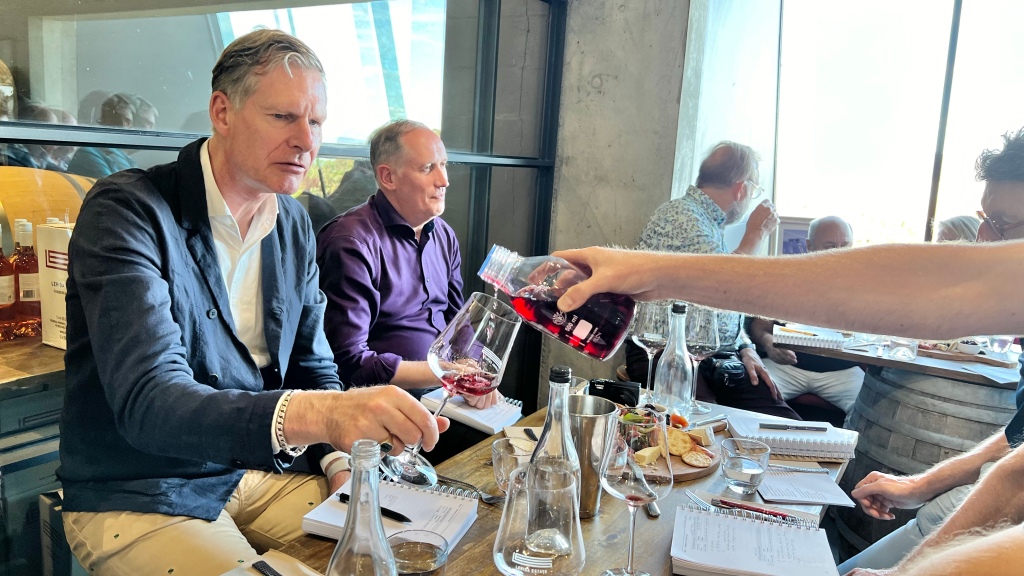
The Estate Pinot Noir 2023 had not been bottled yet, so we tasted a tank sample. First we tried an unfiltered sample, which had the aroma of candycane. Then we tried a filtered sample that was more restrained.
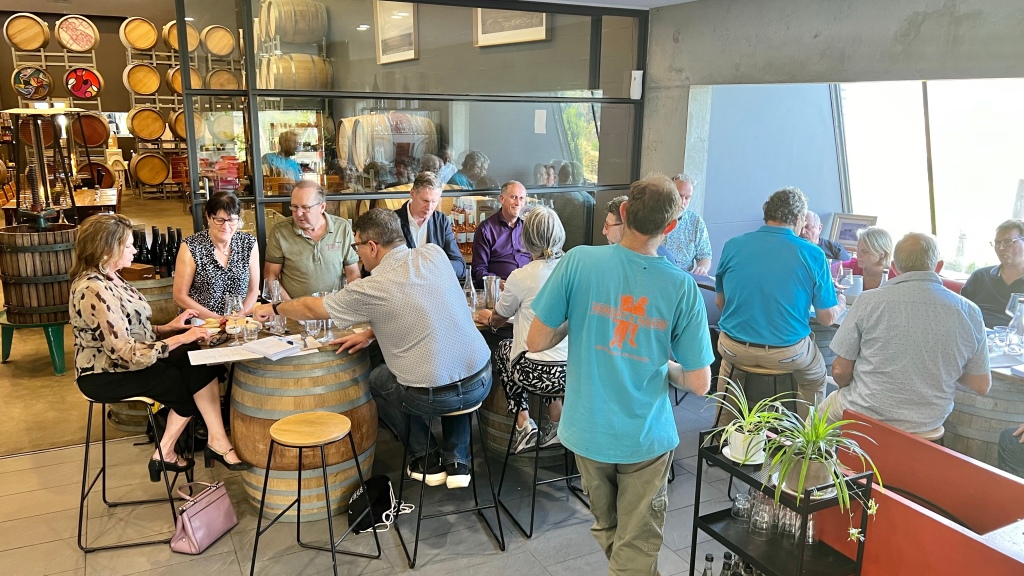
The winemaker has his own style that is very clean with a unique combination of high acidity and soft ripe tannins. Usually soft ripe tannins go together with lower acidity, because that means the grapes are picked when they are more ripe.

After the tasting, the bus took us back to the hotel. We had dinner at Inka in Camberra, a Japanese-Peruvian restaurant.
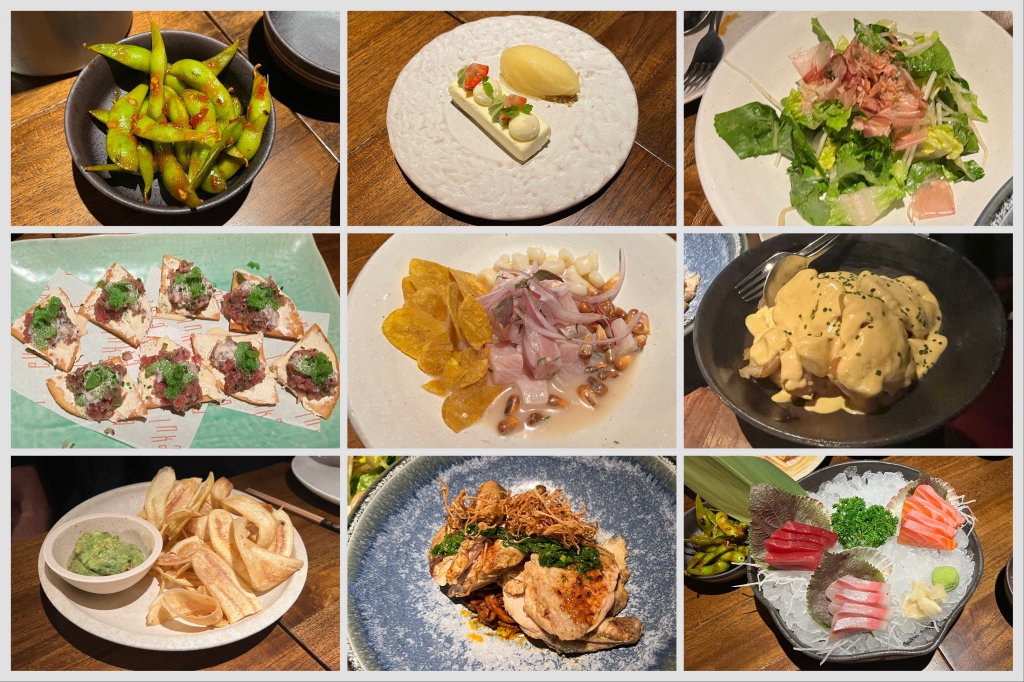
We enjoyed the tasting menu, which consisted of the following dishes:
- Edamame with chilli garlic miso
- Ahuaca-molli, plantain chips with gauacamole
- Sashimi of tuna, salmon, and kingfish
- Ceviche of kingfish in a spicy citrus marinade with crispy corn
- Tuna tostada with ponzu and chives
- Tori Muneniku, chicken breast with Yakitori glaze and Nikkei verde
- Ikon ensalada with bonito flakes
- White potato with Peruvian yellow pepper dressing
- Matcha cheese cake with lemon curd yuzu and mandarin sorbet

Of course there was Australian wine to be enjoyed as well:
- Clonakilla Canberra Riesling 2023
- Ravensworth Canberra Riesling 2021
- Eden Road Canberra Tumbarumba Chardonnay 2022
- Mount Macleod Gippsland Pinot Noir 2021
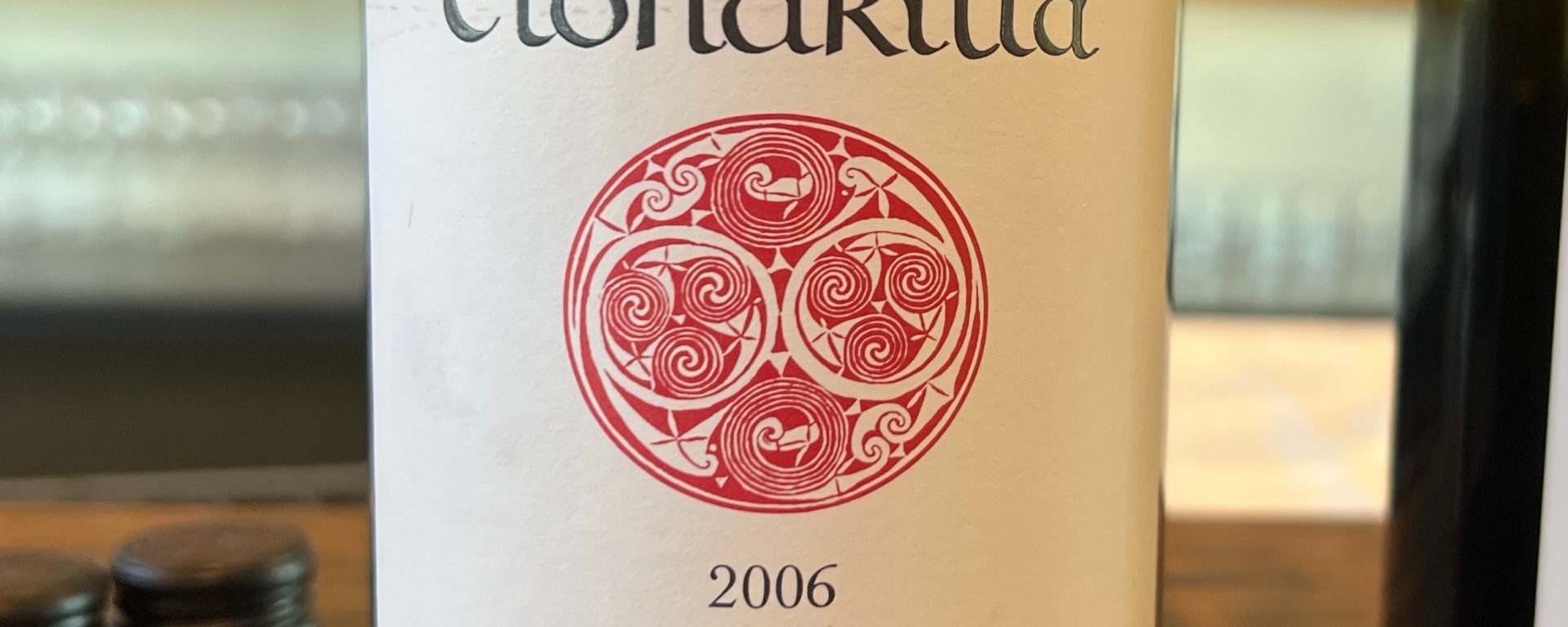

Thank you! I came to Australia as a 13-year-old . . . have drunk and enjoyed wine all my life and proudly drink Australian most of the time. Love Western and South Australian wines above all, oh and Mudgee . . . am learning and liking those from the Apple Isle Tasmania . . . to be honest I barely knew the Canberra area made wine – now you have given me an interesting history and tasting lesson – absolutely great! Oh, don’t think most Aussies know the term ‘Syrah’ = it’s always ‘Shiraz’ here . . .
LikeLiked by 1 person